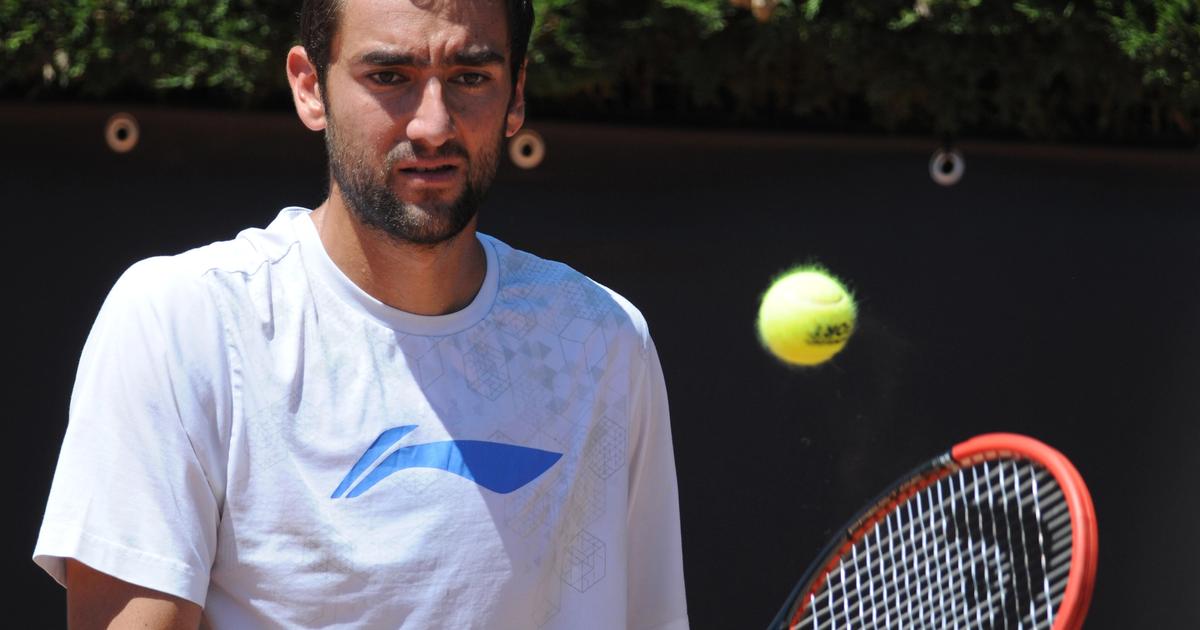Croatia’s Marin Cilic spent much of the early part of his career as a player who had failed to live up to his potential. After a display of significant promise at the Australian Open in 2010, where, as the 14th seed, he reached the semifinals, upsetting newly crowned US Open champion Juan Martin del Potro and former world #1 Andy Roddick en route. There he lost narrowly in four sets to Andy Murray, but the future looked bright for Cilic.
Cilic broke into the top ten shortly thereafter by winning the title in Zagreb in his native Croatia, but for all his talent he rather failed to kick on. That is not to say Cilic entered an entirely unsuccessful period of his career. He reached five finals in 2011, winning the title in St Petersburg. But performances on the biggest stages were lacking. After his run to the Australian Open semifinals, he only reached one Slam quarterfinal until 2014. Even at Masters 1000 level, he failed to make it to the last four once.
His career arguably reached its nadir with a failed drugs test after what was labelled as ‘incautious use of glucose’ fell afoul of doping rules due to his ingestion of the banned substance nikethamide. There was little suggestion that it was intentional, but it was none-the-less hardly a proud moment for Cilic. He was handed a four-month ban, but it turned his career around. He hired Goran Ivanisevic as his coach and the partnership fired him to an unexpected triumph at the US Open in 2014.
A consistent performer
Thereafter Cilic struggled somewhat to recapture that magic, but he none-the-less became a solid top ten performer. He qualified for the ATP Finals for the first time as a result of his US Open triumph and also finished in the year-end top eight in 2016 and 2017. Along the way he won his first Masters 1000 title in Cincinnati in 2016, defeating Murray in the final, and reached further Major finals last year at Wimbledon and earlier this year at the Australian Open.
Unfortunately for Cilic, his efforts at Wimbledon proved to be for naught last year. Having played some fine tennis to reach the final for the first time, defeating dangerous grass-courter Gilles Muller in the quarterfinals and the powerful Sam Querrey in the semis, he looked ready to offer Roger Federer a real challenge. But from the start of the match Cilic was hampered by blisters that reduced him to virtual immobility. It proved a whitewash as Federer claimed an eighth Wimbledon with a 6-3 6-1 6-4 win.
But at Melbourne Park in January this year, Cilic did much to banish those memories. Though he was again denied by Federer, he gave a much better account of himself in losing 2-6 7-6 3-6 6-3 6-1 than he had in SW19. And both final appearances have done much to dispel the notion that Cilic was a one Slam wonder. Indeed, when he rose to a career-high ranking of world #3 after the Australian Open final, it felt deserved, even if it did owe something to Andy Murray and Novak Djokovic’s injuries.
Impressive grass court form
That Cilic should enjoy playing on the grass is hardly a surprise. His serve is one of the best in the game thanks to the tutelage of Ivanisevic, who famously won Wimbledon himself as a wildcard back in 2001. Cilic is particularly adept at hitting fast sliders out wide, a serve that is useful on all surfaces but especially dangerous on a grass court. The quick, slick courts also help Cilic, who lacks the brute strength to truly excel on slower, grittier surfaces.
He is also arguably the form man ahead of Wimbledon this year. Whilst Federer began strongly with a title in Stuttgart, he didn’t look infallible there and his play in Halle was a little stuttering. Though he battled through to the final, his draw was fairly kind and he was ultimately defeated in the title match by Borna Coric, who has only won a solitary match at Wimbledon so far in his career.
Cilic, meanwhile, saw off Novak Djokovic, who after Federer is the most successful active player at Wimbledon with three titles to his name, in the final at Queen’s. Though the Serb came close to victory, holding a match point in the second set, Cilic hung tough to win 5-7 7-6 6-3. Rafael Nadal, meanwhile, hasn’t been past the fourth round at Wimbledon since 2011 and Andy Murray has only just returned to the Tour after nearly a year out.
Cilic has all the tools a Grand Slam champion requires. He has big weapons and impressive mental fortitude, and of course, the experience of getting across the line at a Major. Though he may once have been a forgotten man whose talent was unfulfilled and then a one Slam wonder, he has surely shed both tags. But he may feel that the time is ripe for him to claim another: Wimbledon champion.
Explore new topics and discover content that's right for you!
News



